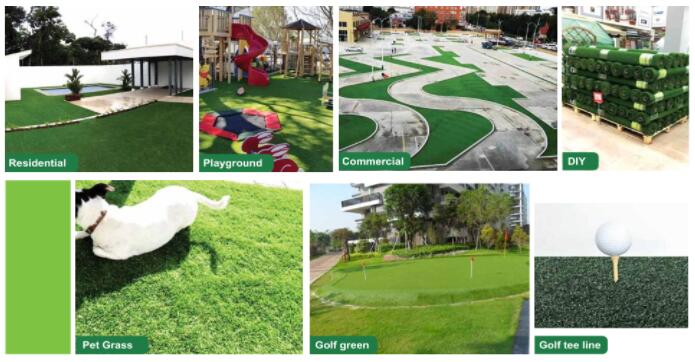Artificial grass is a great way to save time, money and water ......
But there is a wide variety of products available, so choosing the best one can quickly become overwhelming.
Don't worry! We'll show you what to look for when buying artificial grass.
Our advice is to buy the best quality grass you can afford and always do your homework at the supplier to make sure you get the most out of your money.

When it comes to artificial grass, you will notice a wide variety of colors due to the many different shades of green found in real grass. Many manufacturers offer free samples , and it is highly recommended that you take full advantage of this before making any purchase decisions, as unfortunately you cannot rely on internet pictures to get a true indication of the color of the artificial grass you have chosen.
Place your samples side by side on the lawn and compare the color to your real grass. Many people prefer to choose the color that most closely resembles their current lawn.
If your garden is shaded and gets little sunlight, it is best to choose a light-colored artificial lawn because it will brighten up your garden.
There are only three different types of plastic used to make artificial grass.
They are polypropylene, polyethylene and nylon (polyamide), each with different advantages and disadvantages.
Polyethylene is the most commonly used type of plastic fiber because it is usually a very good versatile material.
Nylon is by far the strongest fiber used in artificial grass manufacturing. It is 33% stronger than polyethylene and 26% stronger than polypropylene.
It is also 40% more elastic than polyethylene and 22% more elastic than polypropylene, both of which are softer fibers.
Nylon is naturally very abrasion resistant, but it is also more expensive.
The perfect combination of man-made fibers is to use nylon fibers to reinforce the lower thatch and then combine it with the longer polyethylene fibers.
For low-traffic areas, choose a lawn made entirely of polyethylene or polypropylene.
For frequently used areas, nylon outperforms and outlasts anything else, so in this case, choose a turf that includes nylon.
The thickness of synthetic fibers is often overlooked when comparing artificial grass. However, this is one of the most important factors to consider. Natural looking artificial grass can only be achieved by having upright fibers.
When the fibers of fake grass are laid flat, we call it "matting". Matting can cause a lawn to look unnatural.
One of the main causes of matting is the fine fibers. While the artificial grass you choose may look good initially, heavy use will quickly break down the fine fibers.
When comparing artificial grass samples, break a fiber from each sample and compare the fiber thickness. The thicker the fiber, the better the performance. 200/99 micron fibers are considered very thick.
Copyright:@2020-2021
Comments Please sign in or sign up to post.
0
0 of 500 characters used